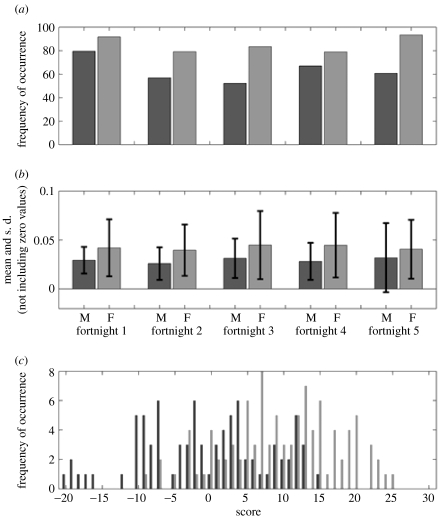Figure 3.
Distributions of markers that distinguish the sexes. (a) The distribution of the marker compound isopropyl hexadecanoate (RT 33.70 min) as the percentage of samples it was detected in and (b) mean and s.d. of the normalized square-root intensity when detected in males and females, over all five fortnights. (c) Distribution of males and females is based on a model using the scoring system (black, male; grey, female). For each fortnight, if the male marker is detected in a specific individual, it is scored as −1, for a female marker it is scored as +1, so an individual scoring +35 contains the strongest possible female fingerprint, whereas an individual scoring −35 the strongest possible male fingerprint. Using a score of five as a divider between the classes, 75% can be correctly classified into their respective genders based on the presence and absence of 14 key markers.

